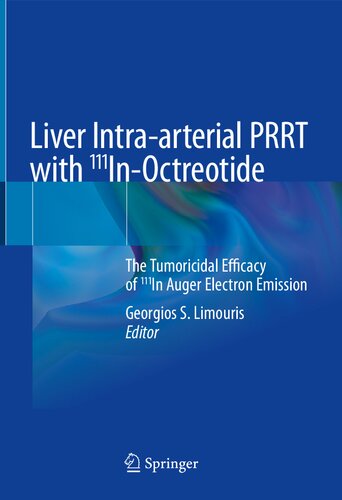

Most ebook files are in PDF format, so you can easily read them using various software such as Foxit Reader or directly on the Google Chrome browser.
Some ebook files are released by publishers in other formats such as .awz, .mobi, .epub, .fb2, etc. You may need to install specific software to read these formats on mobile/PC, such as Calibre.
Please read the tutorial at this link: https://ebookbell.com/faq
We offer FREE conversion to the popular formats you request; however, this may take some time. Therefore, right after payment, please email us, and we will try to provide the service as quickly as possible.
For some exceptional file formats or broken links (if any), please refrain from opening any disputes. Instead, email us first, and we will try to assist within a maximum of 6 hours.
EbookBell Team

4.4
82 reviewsThis book describes in detail a clinical project that reveals the tumoricidal efficacy of Auger and internal conversion electrons, emitted from n.c.a. 111In and implemented in oncology as a treating armamentarium for peptide receptor radionuclide therapy (PRRT), targeting small size (ø ≤ 20 mm) tumors and micro-metastases.
The keen interest in n.c.a. 111In began when it was observed that its Auger electron emission could be highly radiotoxic, due to its high LET when it decayed in the vicinity of cellular DNA. The somatostatin analog octreotide, labeled with [111In-diethylenetriaminepentaacetic acid (DTPA0-D-Phe1)] is an established diagnostic agent for the imaging of somatostatin receptor-positive neuro- (or non-neuro) endocrine tumors. It relies on receptor-mediated binding, internalization and installation in the lysosomes in the proximity of the nucleus; administered in large doses, loco-regionally, via the feeding artery of solid tumors, can be highly radiotoxic if they over-express somatostatin receptors, mainly of the sst2 histotype.
The book compares the results between i.v. and i.a. implementation in more than 80 patients after over 800 i.a. infusions in neuroendocrine tumors, meningiomas, paragangliomas and colorectal carcinomas in a single Institute (Aretaieion University Hospital) and encourages the i.a. way, leading to “tumor melting”, while minimizing the toxicity to healthy peritumoral liver tissue and critical organs (kidneys and bone marrow).
The volume is an invaluable tool for nuclear medicine physicians, interventional radiologists and oncologists dealing with radiopeptide therapies.